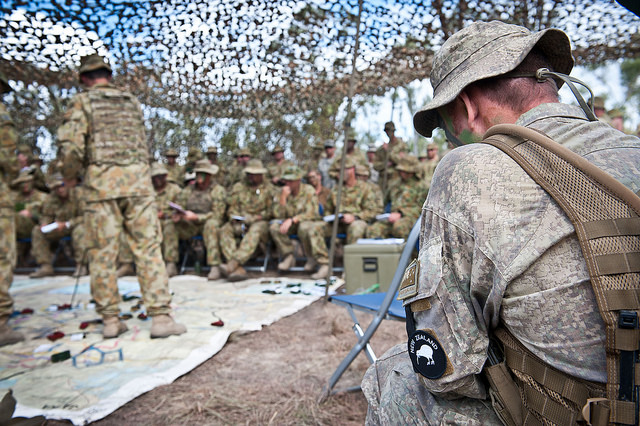
One thing is guaranteed in New Zealand’s forthcoming Defence White Paper: Australia will be identified as Wellington’s leading defence partner by some margin. Australia’s importance to New Zealand’s planning suggests that Wellington’s best and brightest should be poring over the 2016 Australian White Paper. But at least in terms of the public debate, there’s very little of that going on.
This doesn’t suddenly overturn the comment from Defence Minister Gerry Brownlee that ‘New Zealand’s defence relationship with Australia is our closest and most significant.’ It may instead reflect two facts. First, there are far fewer New Zealanders than Australians who take to analyzing defence policy. Second, in 2016, the few kiwis with an eye on Australia’s policy settings mightn’t have found a great deal to be surprised about.
What media coverage there was on this side of the Tasman stayed true to a common view among New Zealanders: that their Australian cousins have a federal government that believes in spending comparatively large amounts of the public purse on military expenditure. This hardly makes for a novel headline in New Zealand, as media response to the 2009 White Paper of the Rudd era indicates. Perhaps this is partly why in 2016 nearly as much New Zealand coverage has been devoted to the Australian Defence Force’s attitude to gluten free recruits.
Similarly, New Zealanders will hardly be surprised at the long list of platforms to which the Australian White Paper wishes to commit future taxpayers. Many are beyond New Zealand’s reach, including submarines, air warfare destroyers, and joint strike fighters. In three such areas where New Zealand has a particular interest, the Australian direction will hardly be shocking: confirmation of a mix of C-17s and C-130J strategic lift aircraft, new frigates (although at nine the number may impress) and an intention to purchase P-8 maritime patrol aircraft. What’s left is the important question of what New Zealand will do replace its own Hercules, ANZAC frigates and Orions, the last an airframe heading into its sixth decade with sensor systems in need of a further upgrade. But these are perennial questions for New Zealand. They are not new.
What might have surprised New Zealanders is the way that the Australian White Paper talked about the TransTasman defence relationship. As I explained recently, New Zealand is referred to as an ANZUS partner more than once. To be fair, the main context for these remarks is the bilateral Australia-New Zealand relationship. The Australian White Paper doesn’t argue that a fully restored trilateral alliance is on the cards. But that distinction may be easily lost in New Zealand, where ANZUS (and sometimes even just the word ‘alliance’) remains sensitive political territory. One report of Prime Minister John Key’s response on ANZUS suggests these sensitivities remain close to the surface.
Yet, given the improvement in Wellington’s relationship with Washington and its efforts to stay close to Canberra, some mention of the three in quasi-alliance terms seems almost inevitable. After all, the Key government will be pleased that the Australian Paper mentions the Iraq training mission which unites the ADF and NZDF in a US-led overseas coalition. When it appears, New Zealand’s White Paper mightn’t be quite as gushing about the importance of America’s Asian rebalance or of its overall role in what Australia calls the Indo-Pacific region. But one can fully expect the New Zealand Government will confirm its already positive endorsement of America’s regional presence.
Similarly, while New Zealand may take a softer line on China than Australia, sentiment on Beijing’s impact on regional security is heading in a firmer direction on both sides of the Tasman. As my colleague David Capie has indicated, New Zealand’s statements on the South China Sea have become more noticeable and critical. This doesn’t mean New Zealand will go as far as Australia and specifically call out Beijing for its land reclamation activities. But in a recent speech in Singapore, New Zealand’s Foreign Minister Murray McCully named the very same problem, and it was clear from his comments that New Zealand believes China needs to take a lead in reducing the South China Sea’s evident militarisation.
The short and the tall of it is that New Zealand and Australia can’t produce anything close to similar defence forces or aggregate defence spending levels. They can be complementary but they’ll always differ. But New Zealand’s declaratory policy on great power relations in Asia is growing closer to Australia’s, as is its mix of concern and comfort about the respective regional roles of China and the United States. Maybe that growing commonality is another reason for what has been a fairly circumspect New Zealand response to the third Australian Defence White Paper in seven years. Or maybe, after four leaders at the Lodge over that same septennium, some New Zealanders think a new White Paper is simply a product of political churn across the Tasman. But it would be a pity if for that, or any other, reason they didn’t read the 2016 iteration more closely.

